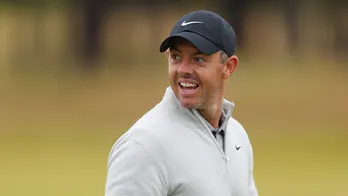Echoes of history in Olympic glory
There are multiple folk tales about the dawn of King Dongmyeoung, who was the founder of Korea’s Guguryeo dynasty, one of the Three Kingdoms that ruled the region from 57BC to 668AD. They involve weddings between gods, abductions, and immaculate conception. But the origin stories agree on one thing – his birth name was Jumong, or “good archer”. And so good was he that he could pierce five flies with a single arrow.  PREMIUM
PREMIUM
Korea and archery remained intertwined even when myth yielded to recorded history. It was mastery of the bow and arrow that created the Three Kingdoms (which occupied the entire Korean peninsula and half of Manchuria), then united them in the sixth century, and eventually repelled invasions by Japanese samurai in the late 1500s.
The link between history, culture and sport is interminable. It explains why certain nations that don’t enjoy all-round excellence at the Olympics – like the Chinese and Americans now do, and the Russians and Germans once did – remain strong contenders in certain disciplines. Brazil and volleyball. Japan and judo. Cuba and boxing. Hungary and water polo. Australia and swimming. Jamaica and sprinting. Kenya and Ethiopia and middle-distance running. But the best illustration of the confluence of tradition and sporting excellence comes from South Korea’s archers.
Also Read | Tokyo 2020: Neeraj Chopra tops group to qualify for javelin final
Of the 45 gold medals awarded across events since modern archery made its debut in the 1972 Munich Games, South Korea has won 27 – nine women’s team, nine women’s individual, two men’s team, six men’s individual, and the first mixed team title at Tokyo 2020.
This record has not been established just by falling back on myth or history - like with all Olympic medals, there’s nothing supernatural about it. It’s been attained through a culture where the sport is introduced in primary schools, boosted as a pastime at local clubs, supported by talent hunts, promoted by companies with the best R&D, and sharpened through rigorous practice and mental conditioning. Feeding on a fusion of ancient lore and modern training, South Korea has managed to create an assembly line of world beaters. It is today as good at archery as any country is at anything.
If there’s one activity in India to which some parallel can be drawn, one sport that can learn from this example, it is wrestling.
Also Read | Tokyo 2020: McLaughlin lowers own world mark to win 400m hurdles gold
In his 2016 book, Enter the Dangal: Travels Through India’s Wrestling Landscape, HT’s National Sports Editor Rudraneil Sengupta pointed to the first recorded wrestling nurseries going back to 1,000 AD. The akhada culture was bred through royal patronage, partly as a form of entertainment, and more importantly, because kings and local chieftains raised armies from the peasantry, for whom wrestling was an integral part of getting battle-ready. The wrestlers, in turn, lived by a code of duty, fraternity and asceticism, and were venerated in the community.
The akhada culture survived the march of history, and even when wrestlers were no longer required as warriors, the code was sustained in some pockets, particularly in Haryana, Punjab and Maharashtra.
It was no surprise then that India’s first individual medal at the Olympics (the only one till Leander Paes broke the shackles in 1996) came from wrestler Kashabha Jadhav (from Satara, Maharashtra) at Helsinki 1952.
India could never emerge as a premier wrestling nation for two principal reasons – the lack of a system and resources that would harness the tradition into a modern sport; and the chasm between the Indian kushti fought in mud pits and the Olympic discipline played on mats. Still, wrestlers emerged sporadically through the years – Kartar Singh won two Asian Games golds in 1978 and 1986, Satpal Singh won gold at the 1982 Asiad, Chandgi Ram was a household name around the time he won gold in the 100kg category in the 1970 Asian Games; and, on the professional circuit, Dara Singh was a superstar.
Over the last 15 years, when non-cricket sport started getting more attention from the government, NGOs such as the Olympic Gold Quest, and corporate houses, it was only logical that wrestling, bubbling under the surface, immediately started breaking through.
Sushil Kumar and Yogeshwar Dutt got the medals at the 2008 and 2012 Olympics, and Sakshi Malik at Rio 2016. On Wednesday, Ravi Dahiya, 23, from the picturesque Nahri village in Sonepat, trailing by four points, pinned his opponent down in the dying moments to ensure that Indian wrestlers will not return empty-handed from Tokyo 2020. And the fancied Bajrang Punia and Vinesh Phogat are yet to step on the mat.
But success can often paper over the cracks; let that not happen with wrestling. The big question as we celebrate a fourth straight medal is what India wants to do with this rich culture – help it take flight the way South Korea did with archery, or let it grapple for survival from one Olympics to another?
Experience unrestricted digital access with HT Premium
Explore amazing offers on HT + Economist Start 14 Days Free Trial Already Subscribed? Sign In
Disclaimer: The copyright of this article belongs to the original author. Reposting this article is solely for the purpose of information dissemination and does not constitute any investment advice. If there is any infringement, please contact us immediately. We will make corrections or deletions as necessary. Thank you.







